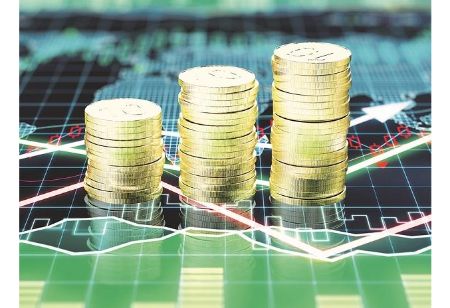
RBI's Forex Intervention to Touch $93 Billion by March: Report


The Reserve Bank of India (RBI) is likely to spend at least $20 billion more to support the rupee. RBI further aims to increase the forex kitty through the reminder of the financial year, taking its overall forex intervention to $93 billion, according to a report.
Wall Street brokerage Bank of America Securities’ report also expects the central bank to raise banks’ HTM (held-to-maturity) limits of excess government securities by two percent of their books to fund the fiscal deficit if high forex intervention limits its open market operations (OMOs), as per PTI news.
The central bank’s forex intervention this fiscal, so far, has touched $73.7 billion, according to the assessment by Bank of America Securities India economists Indranil Sen Gupta and Aastha Gudwani.
Indranil & Aastha also feel the RBI should intervene with $45 billion in 2021-22 if the current account deficit (CAD) remains 0.5 percent of GDP.
It is after eight years that the RBI under its current governor Shaktikanta Das has been building foreign exchange reserves, which as of January 15 stood at $586.1 billion. This is a lifetime high.
While delivering the Nani Palkhivala lecture last Saturday, Das repeated his resolve to not let the 2008 or 2013 run on the rupee to be repeated again.
“Our BoP (balance of payment) forecasts place RBI forex intervention at $93 billion ($73.7 billion so far) in 2020-21 and $45 billion in 2021-22 if the CAD remains at 0.5 percent of GDP, which is dependent on the crude oil averaging at $50 a barrel,” the report said.
The report however mentioned that since the high forex intervention is limiting OMOs, the RBI is expected to raise banks’ HTM limits by two percent of their books to fund the fiscal deficit. It further said that they are more confident now that the RBI will continue to buy forex when the dollar is weakening and let the rupee depreciate when it strengthens.
On Saturday, Das had said, 'To mitigate global spillovers, EMs (emerging markets) like India have no recourse but to build their own forex reserve buffers, even though at the cost of being included in the currency manipulators list.' This aspect needs greater understanding on both sides so that EMs can actively use policy tools to overcome capital flow related challenges, he had said.
Das further said a weak external sector can pose a threat to domestic financial stability in the face of swift changes in the global economic environment as was the case during the 2008 crisis or the taper-tantrum period in 2013.
According to these economists, this public statement marks a signal departure from the over 15 years of RBI stance of intervening in the forex market only to contain rupee volatility.
'Das has achieved a silent rupee revolution by returning the RBI to adequacy of forex reserves after eight years. This will ensure the rupee stability putting large depreciations in global crises years of 2011, 2013 and 2018 behind us,' the economists added.
They also see the rupee at 70.5 to a dollar by December, assuming dollar trading at 1.25 to a euro.